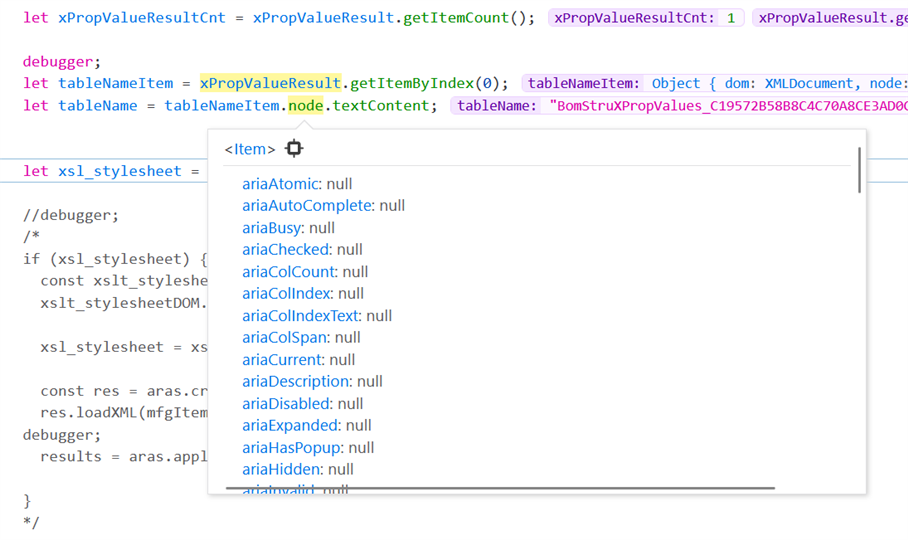Community,
I have successfully created a heavy SQL procedure that extracts all the xClassProperty Values from an End Item Assembly so that the client can:
1) Check which xClasses do not have xProperties assigned as we build out the XClassification tree
2) Check which parts in the End Item structure are not classified
3) Check which xProperty Values fields are missing values.
4) Validate the xProperty Values in the structure against a derived End Item Product Nomenclature (Translated Product Number)
5) Etc.
It is triggered from a Itemtype Report Javascript.

I build a table that contains all the xClasses, xClassProperties and their values for the entire End Item Structure in about 13 seconds.

The issue I'm have is that I can't return a string (table Name) back to the javascript method.
[BomStruXPropValues_3E0619CA0A7B4999A2408FDE1600599E]
In SQL Server the way you declare a variable to pass back data is via the OUTPUT clause.
CREATE PROCEDURE [rh_GetBomStructureXPropValues](@structureGuidList nVarchar(max), @ReturnTableName nVarchar(128) OUTPUT)
AS
The problem is that the Innovator SQL infrastructure see's the OUPUT clause as an Argument (ARG) instead of output (return) variable.
But what is pasted back is the collection of xp.XPropertyValues Table Names (from a tempDB table) that I create in the beginning of the to do dynamic queries against.
So here are my Questions that I need help with:
1) How do I get the Procedure to pass the table name to the javascript method via xPropValueResult?
2) How does the javascript variable xPropValueResult end up with the temdb values it?
Thanks for the guidance.
Scott M.





